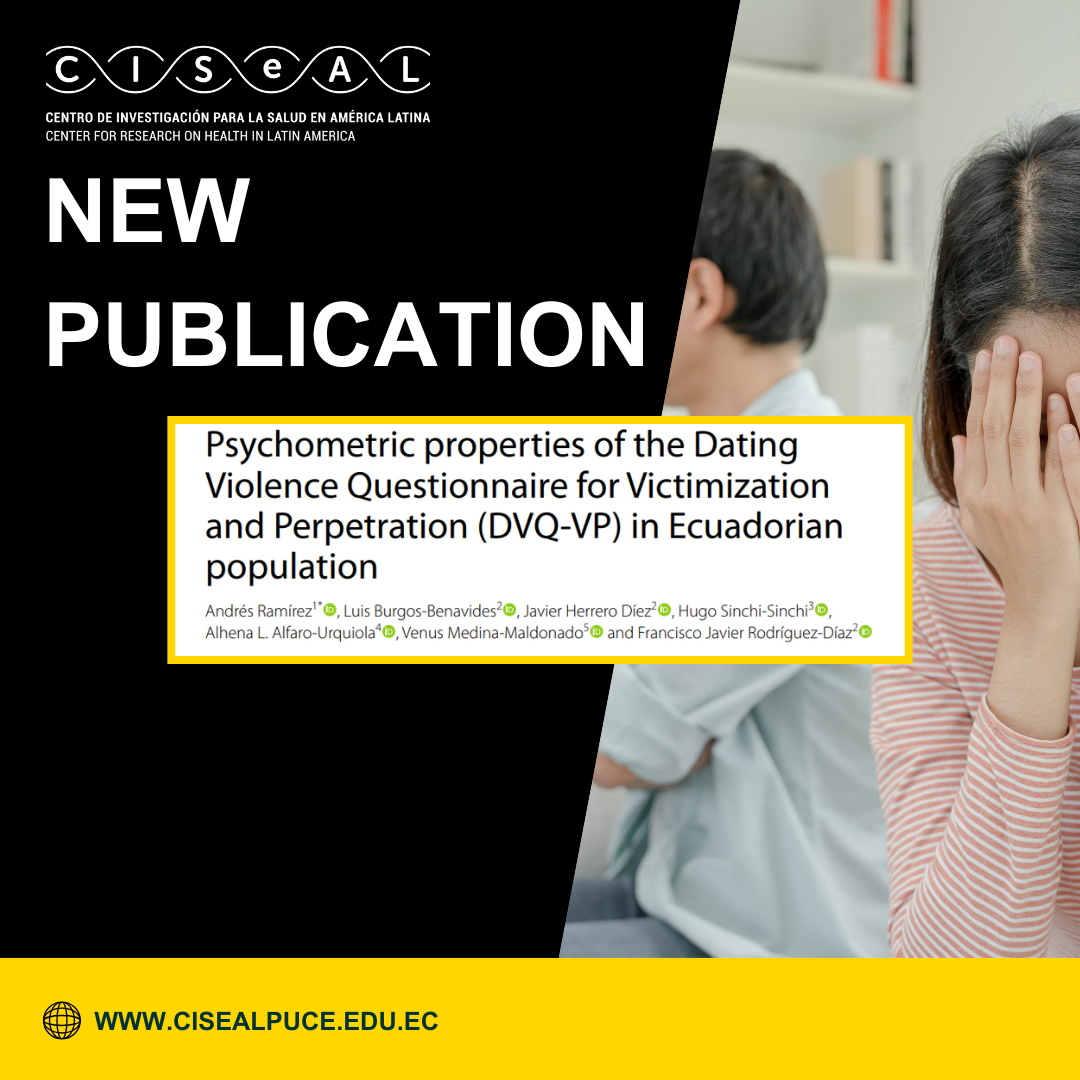 This study, with the participation of Dr. Venus Medina, principal investigator at CISeAL, addresses dating violence as an early manifestation of intimate partner violence, with significant consequences for health and social well-being. This phenomenon, characterized by its complexity, variability, and bidirectionality, requires methodologically rigorous instruments that allow for the precise identification of its dynamics among adolescents and young adults. The DVQ-VP, short for Dating Violence Questionnaire for Victimization and Perpetration, emerges as a culturally adapted and validated tool in Spanish-speaking populations, which assesses both victimization and perpetration across five dimensions: physical violence, psychological violence, sexual violence, controlling behaviors, and relational aggression.
This study, with the participation of Dr. Venus Medina, principal investigator at CISeAL, addresses dating violence as an early manifestation of intimate partner violence, with significant consequences for health and social well-being. This phenomenon, characterized by its complexity, variability, and bidirectionality, requires methodologically rigorous instruments that allow for the precise identification of its dynamics among adolescents and young adults. The DVQ-VP, short for Dating Violence Questionnaire for Victimization and Perpetration, emerges as a culturally adapted and validated tool in Spanish-speaking populations, which assesses both victimization and perpetration across five dimensions: physical violence, psychological violence, sexual violence, controlling behaviors, and relational aggression.
The main objective of this research was to evaluate the psychometric properties of the DVQ-VP in a representative sample of the Ecuadorian population, in order to ensure its validity and reliability in the local context. To this end, an instrumental study was designed in two phases: the first included the linguistic adaptation of the questionnaire through an iterative process of translation and expert review; and the second, the evaluation of its internal consistency, temporal stability, convergent and discriminant validity, in addition to confirmatory factor analysis and network analysis that allowed the exploration of relationships between dimensions of victimization and perpetration.
The sample consisted of 819 participants between 15 and 25 years of age (47% male and 53% female), with a mean age of 20.6 years. Most participants identified as mestizo (90%), while Afro-Ecuadorians, Montubios, Indigenous peoples, and White individuals were represented in smaller proportions. This design allowed for broad coverage and gender balance, which enriched the analysis of dating violence among Ecuadorian youth.
The results confirmed that the DVQ-VP demonstrates high levels of reliability and validity in the studied population, consolidating the previously proposed five-dimension model. Likewise, moderate correlations were found between the victimization and perpetration subscales, supporting the interrelationship of these experiences while preserving the specificity of each dimension. Network analysis revealed significant interactions among the forms of violence, providing a deeper understanding of the phenomenon’s dynamics in youth relationships.
In conclusion, the DVQ-VP is established as a robust and culturally relevant instrument for the study of dating violence in Ecuador. Its application not only strengthens the capacity to detect and research the problem but also provides key evidence for the design of prevention and early intervention programs, contributing to reducing the future incidence of violence in intimate relationships.
Interested in learning more about this article? We invite you to read the full text at the following link:
https://prc.springeropen.com/articles/10.1186/s41155-025-00359-w



